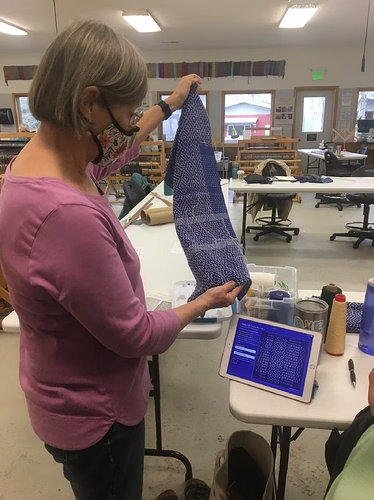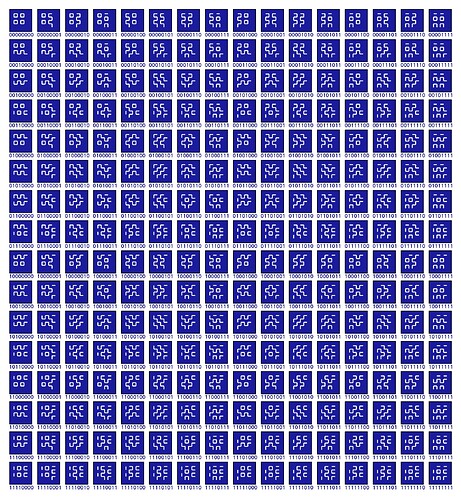I took a mending class and was drawn to Hitomezashi Sashiko which are patterns made by offsetting rows and columns of stitches by 0 or 1 stitch length. As a programmer I challenged myself to stay AFK during the class, but after the class I had to experiment with programming some visualizations of the patterns. I made this in collaboration with the class instructor, who also does these patterns in weaving, which is called Sashiko Ori.
I started experimenting in Cuttle (parametric 2d design app), and then made a stand-alone web app:
Since making this she has used the generator in classes and workshops, and it’s cool to see weavers experimenting and iterating on patterns on their own devices.
Here are some examples of the weaving output from my co-author: Sashiko Ori Weaving: A Conversation with Beth Ross Johnson
This experience confirms that there is a big unmet demand for niche design tools for craftspeople. I’d like to do more collaborations like this. I think that folk schools, community collages, and fab labs are fertile grounds for this code + craft collaboration. I’m working on Cuttle.xyz, and part of our mission is to make it more accessible to build 2D parametric design tools like this.
In a workshop, Beth was asked how many patterns are possible to make with our Hitomezashi Sashiko Pattern Generator.
I think it’s 2^(warp+weft), so… a comically huge number of possibilities: 2^56.
By limiting the pattern to 4x4, I see 256 unique patterns. My theory is that the repeating patterns are included in the list of every pattern, which can be represented by binary numbers. Is there a way to prove that the patterns are unique?

